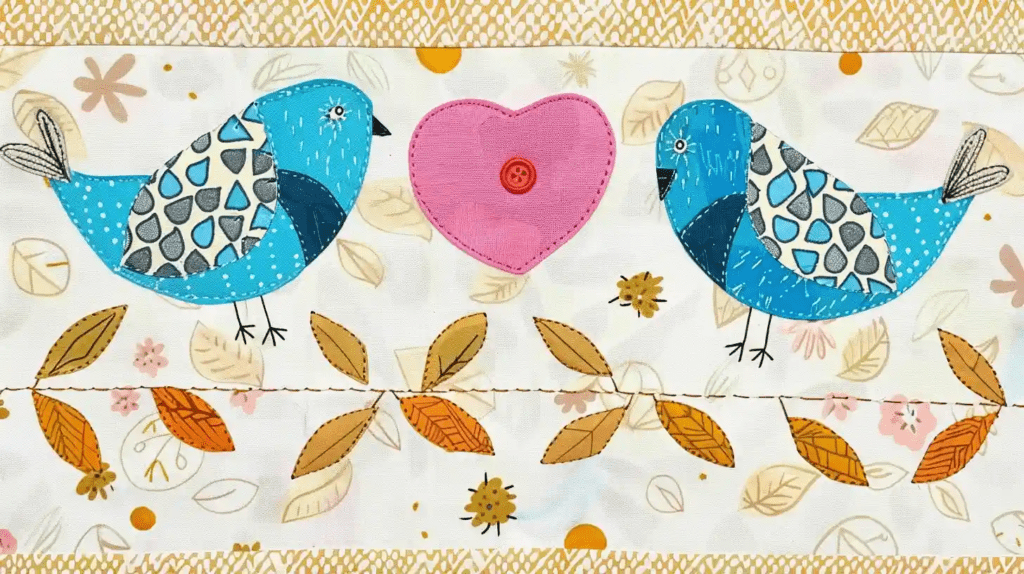Applique is a rewarding and versatile technique that allows you to add unique and creative designs to your projects. Whether you’re a seasoned quilter or a beginner sewer, there are different types of applique to explore and master.
From traditional needle-turn to modern fusible applique, each method offers its own set of challenges and rewards. In this article, we’ll delve into the world of applique and discover the endless possibilities for embellishing your projects. Let’s get started!
Key Takeaways
- Hand applique sews shapes onto a background layer with meticulous hand stitching.
- Machine applique quickly and efficiently attaches fabric pieces. It offers versatility with various stitch options.
- Cutting through layered fabrics on reverse applique reveals intricate designs.
- Fused applique uses iron-on adhesive to bond fabric shapes to the background with heat.
- Raw edge applique leaves fabric edges exposed for a modern, casual look.
What is Applique?
Applique is a decorative needlework technique where you sew or stick pieces of fabric onto a larger fabric to create unique designs. With various stitching techniques, you can attach different shapes and fabrics to your projects.
These fabric pieces are often sewn onto the larger fabric in creative patterns. Whether you use hand stitching or a sewing machine, the technique lets you explore various methods.
Applique isn’t limited to just quilting. You can also use it in clothing and other crafts. This versatile method offers a fun and creative way to enhance your textile projects with customized designs.
Exploring 9 Different Types of Applique
When exploring the different types of applique, you’ll encounter various techniques. Each method offers unique ways to enhance your sewing projects.
1. Hand Applique
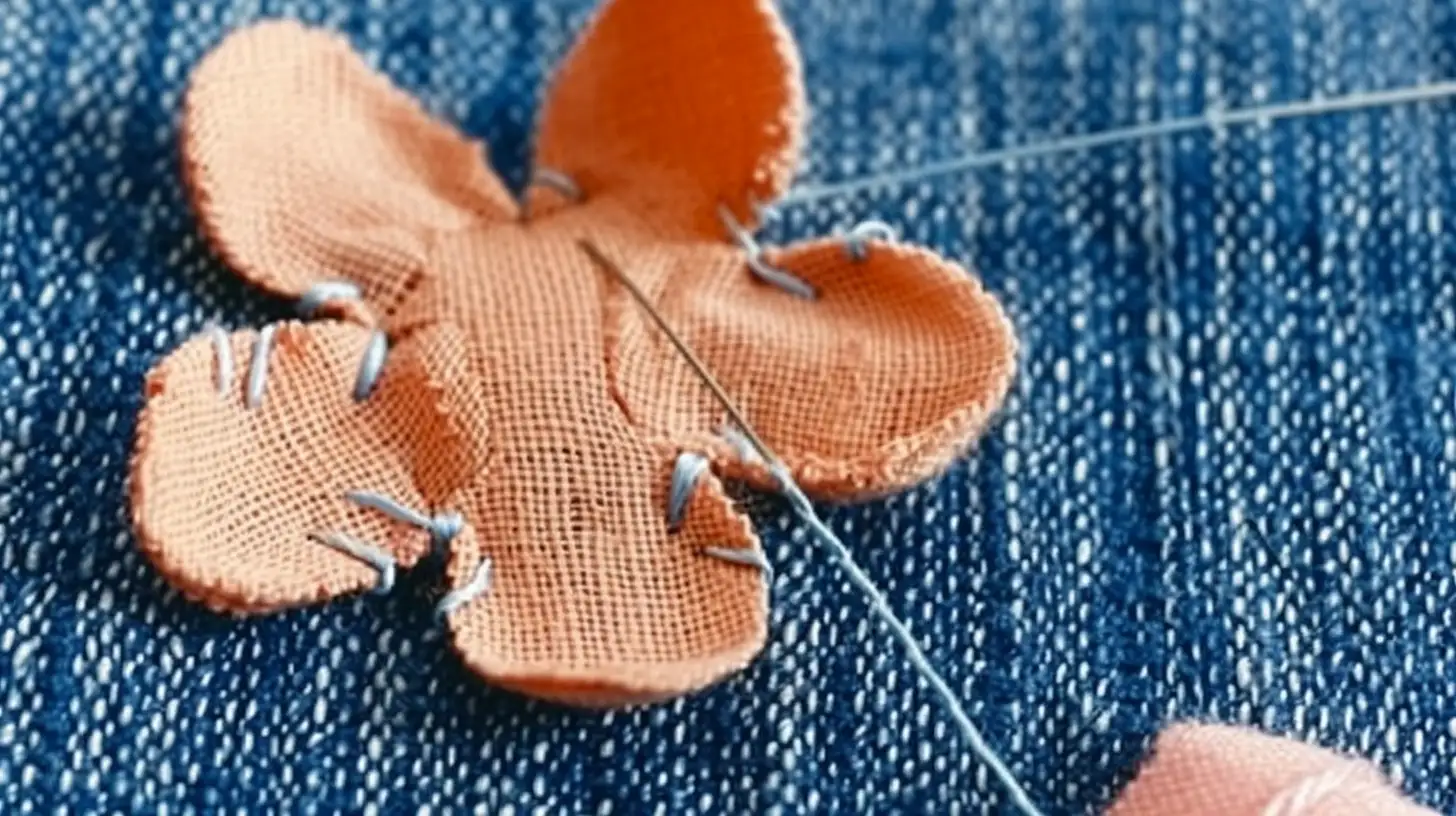
Hand applique brings a personalized touch to your projects. It allows you to sew shapes onto a background layer with meticulous detail. Using traditional needle-turn techniques, you can create neat edges, adding a refined finish to your designs. This method is perfect if you love hand sewing and paying attention to intricate details.
Hand applique varies in complexity, from simple shapes to elaborate patterns, offering endless creative possibilities.
Whether you’re a beginner or an experienced quilter, hand applique lets you showcase your skills and produce stunning, one-of-a-kind pieces.
2. Machine Applique
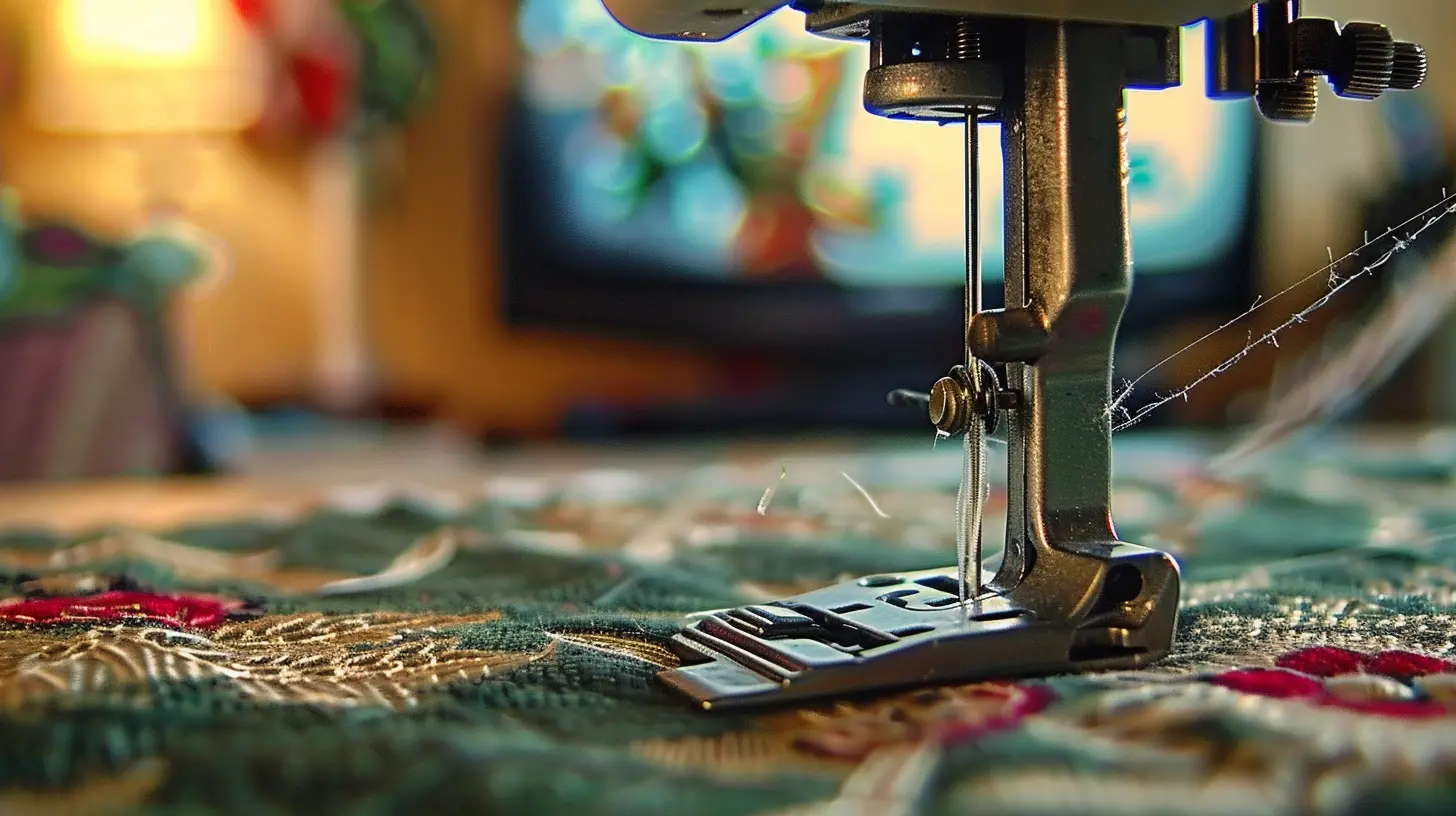
Have you ever wondered how to speed up your applique projects without sacrificing quality? Machine applique is your answer. Using a sewing machine, you can quickly and efficiently stitch fabric pieces onto your background.
This method is perfect if you prefer machine sewing over hand sewing. With stitches like the zig-zag and satin stitch, you can securely attach the edges of your fabric pieces, ensuring they stay in place and look polished.
3. Reverse Applique
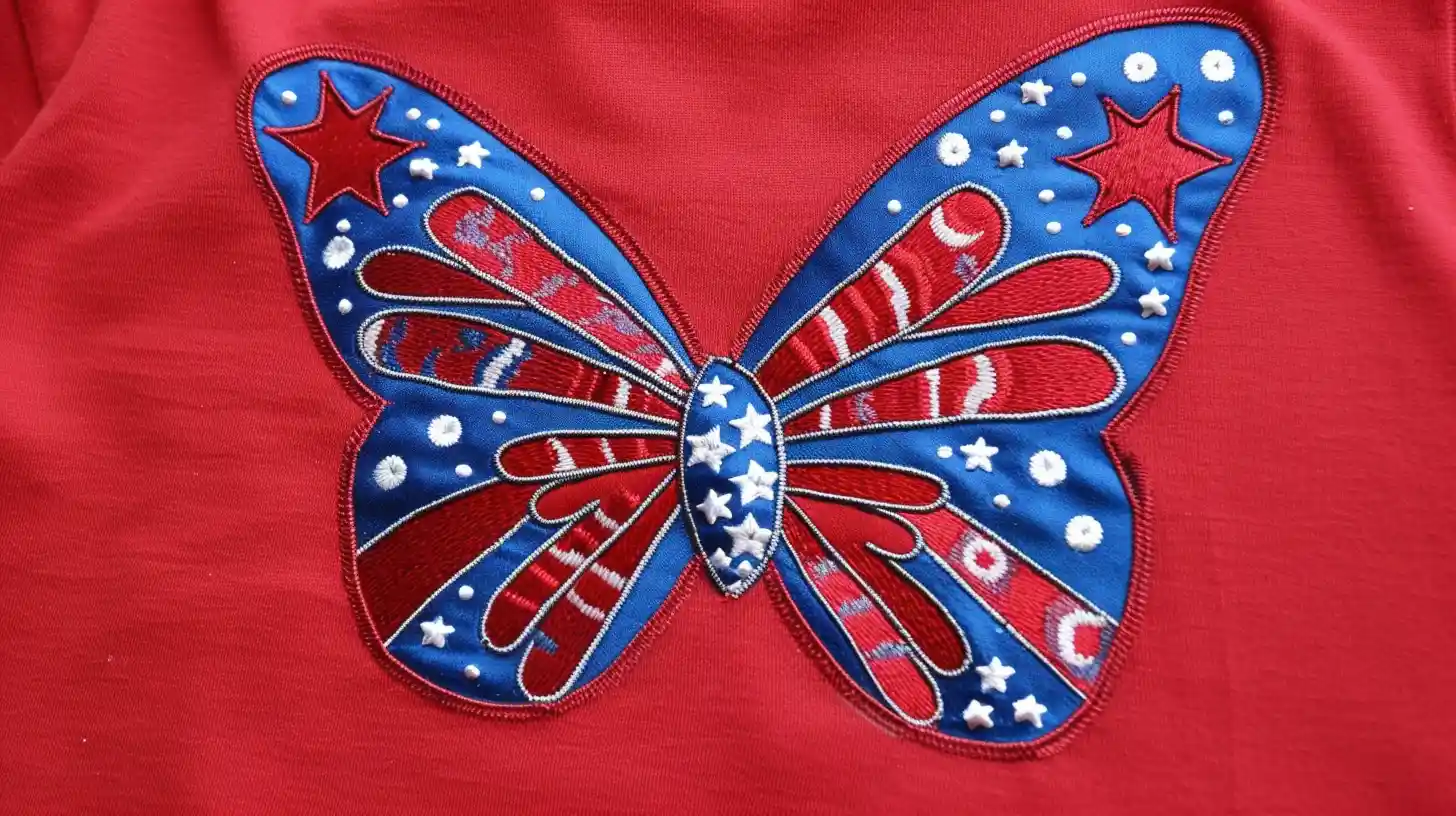
If you want to add depth and visual interest to your quilt, reverse applique uniquely reveals intricate designs by cutting through layered fabrics.
Reverse applique provides a versatile approach to your projects. So you can craft visually stunning pieces.
4. Smooth Edge Applique
Smooth-edge applique is often used in quilting and garment embellishments to create a clean and polished look. It involves turning under the fabric edges before stitching to ensure a neat edge.
When done correctly, smooth-edge applique can make your applique designs stand out beautifully. It adds a high-quality, polished touch to your projects. It’s perfect for anyone looking to achieve a professional finish in their creations.
5. Raw Edge Applique
Conversely, raw edge applique brings your designs a modern and casual flair. This technique involves exposing the raw edges of your fabric pieces, creating a textured look.
Raw-edge applique is popular for its quick and easy application. This makes it ideal for projects like quilts, clothing, and home decor.
6. Fused Applique
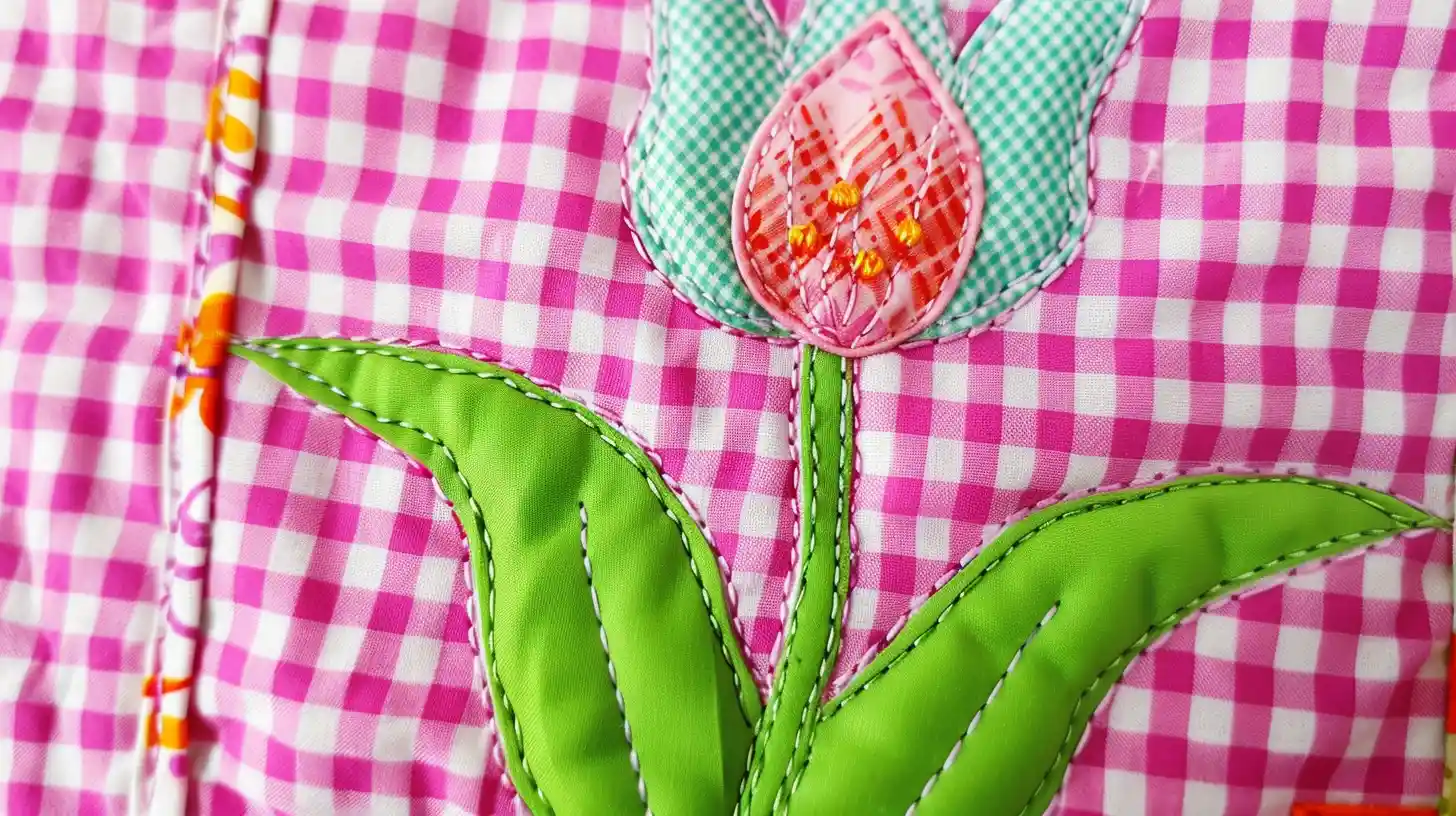
Fused applique offers a fast and convenient method. Using the fusible web, you can quickly bond fabric shapes to your base fabric with heat. This makes this technique ideal for beginners or those in a hurry.
You don’t need a needle and thread. Simply cut your fabric shapes, place them on the fusible web, and iron them onto the background. To secure and enhance your design, stitch around the edges either by hand or machine. This process not only speeds up your project but also allows for intricate designs without complex sewing techniques.
7. Decorative Stitch Applique
Decorative stitch applique uses various stitching techniques, such as blanket stitch, satin stitch, and decorative embroidery. By incorporating these stitches, you can bring a unique flair to your applique projects.
Experimenting with these techniques not only elevates your applique designs but also allows for creative expression and customization.
8. Broderie Perse
Broderie Perse is a fascinating applique technique. It involves cutting motifs from printed fabric and meticulously stitching them onto a background to create intricate designs. This method, originating in Persia, gained popularity in the 18th and 19th centuries for its ability to craft detailed floral patterns.
By carefully arranging and layering the motifs, you can compose picturesque scenes that showcase your creativity. Broderie Perse allows you to mix and match various fabrics, offering a unique and colorful twist to traditional applique.
9. Shadow Applique
Now, let’s turn our attention to shadow applique. This technique uses layered fabrics to create a captivating shadow effect.
By layering fabric pieces, you can achieve the illusion of depth and add a striking dimension to your designs. Start by placing a darker fabric underneath a lighter one. This contrast creates the shadow effect that makes the design pop. For added visual interest, experiment with contrasting colors or subtle shades to enhance the layers.
Applications of Applique
You can use applique in quilting, clothing, and home decor projects. This technique allows you to create eye-catching designs that elevate the look of any piece.
Quilting
In quilting, incorporating applique techniques can transform a simple quilt into a stunning piece of art.
You can experiment with different fabrics and shapes to craft unique patterns. Whether you’re a beginner or an experienced quilter, these techniques add depth and dimension, making your quilt stand out.
Clothing and Fashion
Applique breathes life into clothing and fashion by adding decorative elements that transform ordinary garments into standout pieces. Designers use applique to craft unique patterns and textures, making clothing items like dresses, jackets, and jeans truly one-of-a-kind.
Home Decor
Beyond transforming fashion, applique also adds a vibrant and personalized touch to home decor. You can embellish pillows, table runners, and wall hangings for a unique finish.
Whether you prefer modern designs or intricate traditional motifs, applique allows for endless creativity.
By incorporating applique into your home decor, you’ll elevate the aesthetic of any room with custom.
Conclusion
In exploring the diverse world of applique, you’ve seen how each technique adds its own unique flair to fabric projects. Whether you’re quilting, crafting clothing, or creating home decor, there’s an applique method perfect for your vision.
Don’t hesitate to mix and match these techniques to bring your creative ideas to life. Now, it’s your turn to experiment and make your projects stand out!
Explore more patch ideas at the Accessories-Wholesaler blog! Find your favorite iron-on patches at Accessories-Wholesaler!
FAQs
What Are Appliqué Techniques?
Appliqué techniques include machine appliqué with zig-zag stitches, hand appliqué for intricate designs, and fused appliqué using iron-on adhesive. You can choose based on your project needs and the level of detail you want.
What Is the Easiest Appliqué Method?
The easiest applique method is fused applique. You just use a fusible web to attach fabric shapes to the background fabric. This method is perfect for beginners since it doesn’t require extensive sewing skills.
What Are Appliqué Forms?
Applique forms include reverse applique, basic applique, satin stitch applique, Baltimore, Mola, and stained glass techniques. Each form offers unique challenges and design possibilities. So, choose based on your desired outcome and personal preference.

